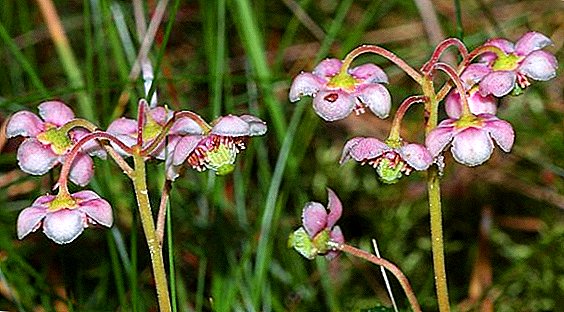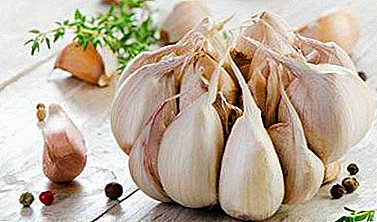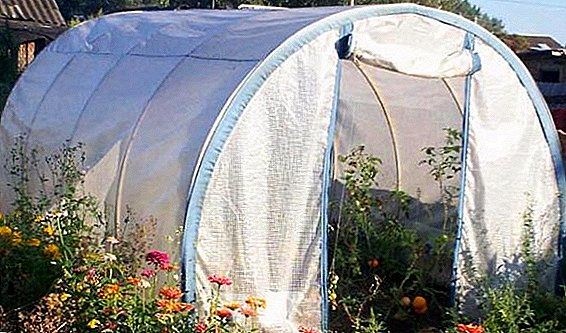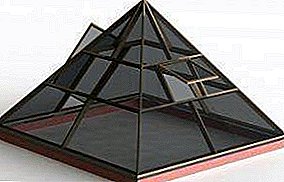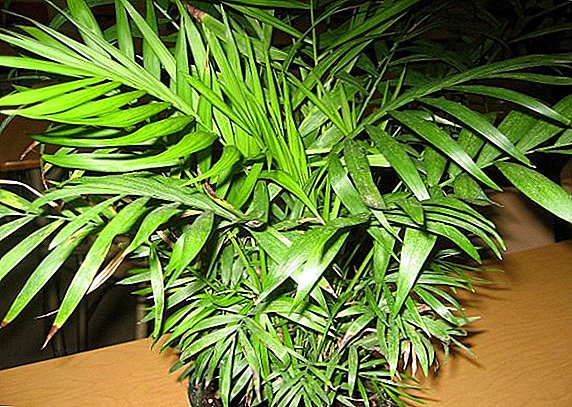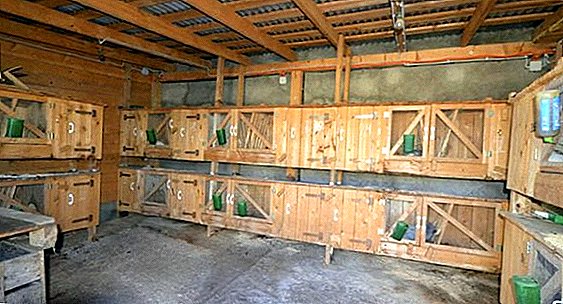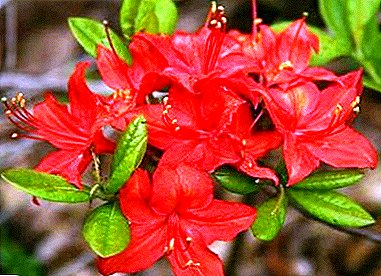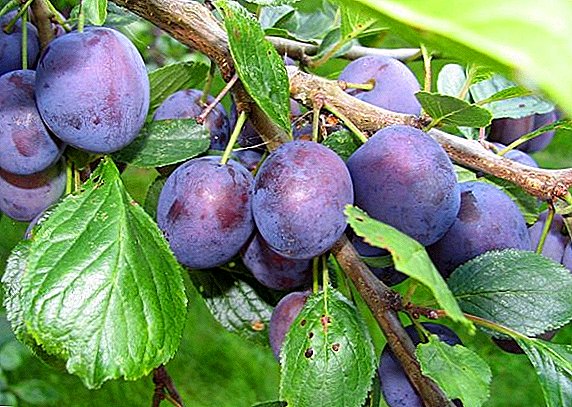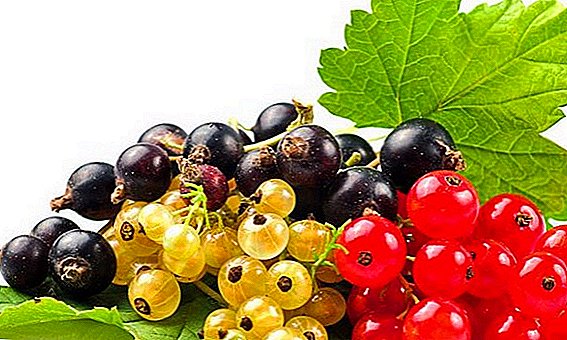
Berry bushes are beloved by many gardeners for their wonderful and nutritious fruits, which, in addition to high taste, bring more obvious benefits. But many summer residents have a question, does his bushes need extra care during the rest period? For example, currants, both black and red, need pruning and care even in the fall, after the harvest from the bushes was gathered. However, it is necessary to know some technological details of these processes, so as not to harm your berries. This article is fully devoted to such subtleties, in it you will learn: how to feed currants in the fall, what to spray from pests and what are the nuances of pruning these bushes.
Do you need?
Currant care after harvesting is an integral part of growing these bushes. Statistical data may indicate its necessity, according to which the yield of currant bushes subjected to autumn treatment exceeded the yield of plants left without the latter by at least 25%.
Did you know? Currants are found on all continents, with the exception of Antarctica and Australia. There are more than 150 species of this shrub.In addition to increasing yields, careful care of your currant can guarantee its survival next year, safety in the presence of currant treatment in the fall from various diseases and pests. Next season, a healthy bush can be divided and transplanted to a new location, while the patient will most likely have to be removed or, at the very least, spend extra time on his treatment.
 It was also found that the correct composition and time of dressing improve the taste properties of berries and increase the amount of nutritional and beneficial elements contained in them.
It was also found that the correct composition and time of dressing improve the taste properties of berries and increase the amount of nutritional and beneficial elements contained in them.Pest and disease treatment
Autumn processing of currants from pests and diseases is the most important aspect that guarantees its continued survival and stable fruiting. In general, there are two large groups of agents designed to protect against various pathogens. This treatment with the help of chemicals and various folk remedies.
In addition to black and red currants, there is also white currant and golden currant.You should understand that chemical products certainly give a better result, but not every gardener is committed to such measures. But, if you see that your bushes are in the process of actively fighting with a particular disease or parasite, it is better to start using chemicals, without relying on folk methods.

Chemical solutions
Among the means, than it is necessary to spray currants in the fall against pests, there must be fungicides and insecticides. It is worth remembering that these drugs can pose a significant threat to human health, therefore, in the process of treatment, you must follow personal precautions.
As an antifungal drug, you can take, for example, a 1% solution of Bordeaux mixture, Fundazol, Topaz and others. Spraying is desirable to carry out in the evening or early in the morning, because the drug, interacting with active sunlight, can burn the stems and leaves.
Important! If you notice signs of a fungal disease or pest damage on your currant, a one-time treatment will not be enough, you should spray the bushes at least twice.Such insecticides as Karbofos, Aliot, Lepidocid, Fitoverm, Neoron and others are suitable as insecticides. All of these drugs are designed to combat the Galicia, glass and mites, which are especially greedy for the nourishing currant leaves for them.

Folk remedies
Many modern gardeners refuse to use chemical agents, since, falling on the leaves and stems of the plant, they will eventually, even if in much smaller quantities, be inside the berries. Therefore, we present one of the most popular methods of autumn processing currant bushes.
Garlic tincture has proven to be a very effective tool in the fight against various diseases and pests. For its preparation should take 100 g of garlic in 1 liter of water. Garlic is finely chopped and add to the water, then leave it all to brew for one day. Next, in the resulting liquid, add 4 g of finely chopped soap to each liter of the mixture. You need to process at the rate of 0.5 liters of tincture per bush.
Did you know? Previously, currants were called monastic berries, since they were actively grown by monks in monasteries for consumption and as raw materials for various medicines.

You can also use a weak solution of potassium permanganate, which has established itself as a fairly effective, and most importantly - an affordable tool. Processing with potassium permanganate can be done at any time, even during the flowering period of the plant.
Tillage
Top dressing currant after harvest is quite an important factor contributing to its active fruiting in the next season. There is no significant difference for the plant, what kind of fertilizer you will feed it, organic or mineral, everything is equally good for them and will only benefit.
Important! Remember that if during planting you applied fertilizer to your currant bushes, then for the next 2-3 years they will not need any additional feeding.

Organic
Organic fertilizer is best to use compost, peat or humus. It is possible in combination, but not more than one bucket in total for each bush. These substances will provide your plants with the proper amount of nitrogen.
You can also use any bird droppings or mullein, but you need to be careful with these fertilizers, as they can "burn" the roots of plants if they are added undiluted. To obtain a ready-to-use solution, it is recommended to dilute these substances in a ratio of 1:10 with water and let them infuse for a week.
Mineral fertilizers
Most often, fertilizers rich in phosphorus and potassium are used to feed currants, since the amount of nitrogen contained in organic matter fully covers the needs of this plant. Currants require a lot of phosphorus, because it is the main substance that stimulates the stiffness of shoots. So, the following substances are best suited as a mineral dressing:
- Double superphosphate in combination with potassium nitrate (for 1 bucket of water, 2 tablespoons of each substance).
- Ammophoska and wood ash (2 tablespoons of the first and 1 cup of the second for a bucket of water).
- Superphosphate combined with urea and wood ash (1 tablespoon of the first and second and 1 cup of ash per bucket of water).
- Potassium sulfate in a complex with superphosphate (in a tablespoon per 10 liters of water).
What else?
A necessary part of the autumn care of currant bushes is its timely pruning and care for the soil, in the area of which the plant grows. Some gardeners assign agrotechnical manipulations a dominant role in the successful development of this berry.
It is useful to learn for beginners gardeners about how to cook black and red currants and how to prepare it for the winter.
Soil care
Before the first frosts strike, it is not superfluous to carry out a light loosening of the soil, to a depth of about 7-10 cm, which will allow the parasite larvae, which settle in the upper layers of the soil, to be moved to the surface, where they will die from the effects of low temperature. 
In addition, loosening helps to saturate the soil with oxygen, which is necessary for the root system of this shrub for proper and rapid development. After loosening the soil is not superfluous to mulch with peat or some other organic matter.
Pruning
Pruning is desirable to produce before processing the bushes with the help of various chemical agents. In the first three years of the life of a young bush pruning is done for sanitary purposes. All patients are removed in appearance, branches too thin and creeping along the surface of the earth. All subsequent trimming are rejuvenating. To do this, eliminate all too old and weak shoots, leaving 3-4 old branches and up to a dozen young ones not trimmed. 
It is worth paying attention to the process of crown formation in various varieties of currant. So, for better berry formation on the bushes of white and red currants, the cup shape is suitable. Shrubs of the black currant are formed depending on their type - either compact or rather sprawling. However, in any case, you should not allow excessive density of the bush.  For currants old are considered branches that have reached the age of three. They need to be cut almost near the ground. This manipulation stimulates the plant to release new young shoots.
For currants old are considered branches that have reached the age of three. They need to be cut almost near the ground. This manipulation stimulates the plant to release new young shoots.
So, as you can see, the processing of currant bushes after harvesting is quite a multifunctional thing. It will not only allow you to keep your bushes safe and sound, but with proper and scrupulous performance will certainly increase your harvest.


